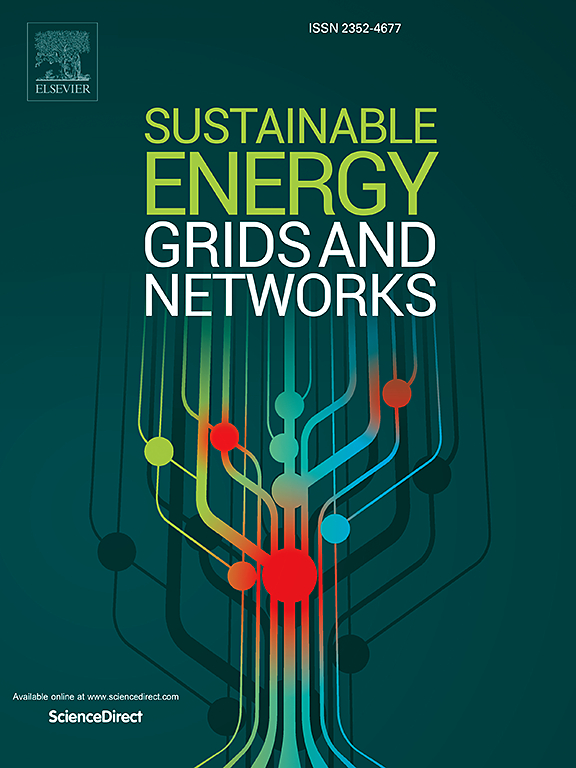Optimal design model for a public-private Renewable Energy Community in a small Italian municipality
IF 4.8
2区 工程技术
Q2 ENERGY & FUELS
引用次数: 0
Abstract
Energy communities (ECs) are currently seen as an important pathway to increase the participation of citizens in the energy transition. The present work proposes a mixed integer linear programming (MILP) optimization model that provides the optimal design of a renewable energy community (REC) in terms of best technologies and chosen members. Different objective functions are investigated so that the REC’s design can be studied from different perspectives. The first objective is related to the minimization of total annualized costs (TAC) while the second one regards the maximization of the shared energy. The model considers one year as time horizon with a timestep of one hour. A case study is defined by considering the municipality of Plodio, located in the northwest of Italy, as the host of a potential REC. A total of 11 possible users are introduced, including municipality and residential users. In cost-optimized scenarios, the REC design is characterized by fewer users but has the maximum installation of PV modules. However, most of the revenues are obtained due to the selling of electricity and not due to its sharing. When the shared energy is maximized, all the candidate members are chosen and technologies such as wind turbines and batteries are exploited to increase the number of periods characterized by the injection of electricity into the grid. It is also noted that higher electricity prices increase the profitability of the investment. Finally, it is shown that the inclusion of an industrial user positively influences energy-sharing indicators.
意大利小城市公私可再生能源社区的优化设计模型
能源社区(EC)目前被视为提高公民参与能源转型的重要途径。本研究提出了一个混合整数线性规划(MILP)优化模型,从最佳技术和所选成员的角度对可再生能源社区(REC)进行优化设计。研究了不同的目标函数,以便从不同角度研究可再生能源社区的设计。第一个目标与总年化成本(TAC)最小化有关,第二个目标则与共享能源最大化有关。该模型的时间跨度为一年,时间步长为一小时。案例研究将位于意大利西北部的普洛迪奥市作为潜在 REC 的所在地。共引入了 11 个可能的用户,包括市政用户和居民用户。在成本优化方案中,REC 设计的特点是用户较少,但光伏组件安装量最大。然而,大部分收入是通过出售电力获得的,而不是通过分享电力获得的。当共享能源最大化时,选择所有候选成员,并利用风力涡轮机和电池等技术,增加向电网注入电力的时段。此外,我们还注意到,较高的电价会提高投资的盈利能力。最后,研究表明,工业用户的加入会对能源共享指标产生积极影响。
本文章由计算机程序翻译,如有差异,请以英文原文为准。
求助全文
约1分钟内获得全文
求助全文
来源期刊

Sustainable Energy Grids & Networks
Energy-Energy Engineering and Power Technology
CiteScore
7.90
自引率
13.00%
发文量
206
审稿时长
49 days
期刊介绍:
Sustainable Energy, Grids and Networks (SEGAN)is an international peer-reviewed publication for theoretical and applied research dealing with energy, information grids and power networks, including smart grids from super to micro grid scales. SEGAN welcomes papers describing fundamental advances in mathematical, statistical or computational methods with application to power and energy systems, as well as papers on applications, computation and modeling in the areas of electrical and energy systems with coupled information and communication technologies.
 求助内容:
求助内容: 应助结果提醒方式:
应助结果提醒方式:


